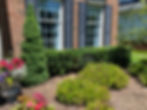

Choosing the Right Plants for Your Landscape in Clarkston, Lake Orion, Goodrich, and Oxford
Aug 23, 2024
3 min read
0
15
0

Creating a beautiful and sustainable landscape begins with choosing the right plants. The climate and soil conditions in Clarkston, Lake Orion, Goodrich, and Oxford require careful plant selection to ensure your garden thrives year-round. This guide will provide you with detailed information on choosing the best plants for your landscape, focusing on native and climate-appropriate species that enhance the beauty and sustainability of your garden.
Understanding Your Climate and Soil
Before selecting plants, it’s essential to understand the climate and soil conditions in your area:
Climate
Clarkston, Lake Orion, Goodrich, and Oxford experience a humid continental climate with distinct seasons, including cold winters and warm, humid summers. Plant selections should be able to withstand these seasonal variations.
Soil Conditions
The soil in this region is typically clayey, which affects water retention and drainage. It’s important to choose plants that can thrive in clayey soils or amend the soil to improve its structure.
Benefits of Choosing Native Plants
Native plants are adapted to the local climate and soil conditions, making them an excellent choice for sustainable landscaping:
Low Maintenance
Native plants require less water, fertilizer, and pesticides compared to non-native species. This reduces maintenance efforts and promotes environmental sustainability.
Wildlife Support
Native plants provide habitat and food for local wildlife, including birds, butterflies, and beneficial insects. This enhances biodiversity and supports ecosystem health.
Resilience
Native plants are more resilient to local pests and diseases, reducing the need for chemical interventions.
Recommended Native Plants for Your Landscape
Here are some native plant options that thrive in Clarkston, Lake Orion, Goodrich, and Oxford:
Trees
Red Maple (Acer rubrum): A versatile tree that provides beautiful fall foliage and adapts well to various soil types.
Eastern Redbud (Cercis canadensis): Known for its stunning pink flowers in spring and heart-shaped leaves.
Shrubs
Smooth Hydrangea (Hydrangea arborescens): Produces large, showy flower clusters and thrives in partial shade.
Buttonbush (Cephalanthus occidentalis): Features unique, spherical flowers that attract pollinators.
Perennials
Black-Eyed Susan (Rudbeckia hirta): A hardy perennial with bright yellow flowers that bloom from summer to fall.
Purple Coneflower (Echinacea purpurea): Known for its striking purple flowers and medicinal properties.
Grasses
Little Bluestem (Schizachyrium scoparium): A native grass that provides year-round interest with its blue-green foliage and reddish-brown stems in fall.
Switchgrass (Panicum virgatum): Tolerant of various soil conditions and provides excellent erosion control.
Climate-Appropriate Non-Native Plants
In addition to native plants, some non-native species can also thrive in your landscape while providing aesthetic and functional benefits:
Trees
Norway Spruce (Picea abies): A hardy evergreen that provides year-round greenery and windbreaks.
Japanese Maple (Acer palmatum): Offers stunning foliage colors and delicate branching structure.
Shrubs
Boxwood (Buxus sempervirens): A versatile evergreen shrub ideal for hedges and topiaries.
Rose of Sharon (Hibiscus syriacus): Produces large, colorful flowers and can thrive in various soil types.
Perennials
Daylilies (Hemerocallis spp.): Known for their vibrant flowers and adaptability to different soil conditions.
Hostas (Hosta spp.): Ideal for shady areas, providing lush foliage and seasonal flowers.
Grasses
Feather Reed Grass (Calamagrostis x acutiflora): An ornamental grass that adds vertical interest and thrives in various conditions.
Fountain Grass (Pennisetum alopecuroides): Features attractive plumes and works well in borders and mass plantings.
Tips for Successful Planting
To ensure your plants thrive, follow these tips for successful planting and maintenance:
Soil Preparation
Improve clayey soil by adding organic matter, such as compost, to enhance drainage and nutrient availability.
Proper Planting Techniques
Plant at the correct depth and water thoroughly after planting to establish strong root systems.
Watering
Water deeply and regularly, especially during the first growing season. Adjust watering frequency based on weather conditions.
Mulching
Apply mulch around plants to retain moisture, suppress weeds, and regulate soil temperature.
Pruning and Maintenance
Prune trees and shrubs as needed to maintain shape and promote healthy growth. Regularly remove dead or diseased plant material.
Conclusion
Choosing the right plants for your landscape in Clarkston, Lake Orion, Goodrich, and Oxford involves selecting species that are well-adapted to the local climate and soil conditions. By incorporating native and climate-appropriate plants, you can create a beautiful, low-maintenance, and sustainable garden that enhances the beauty and biodiversity of your outdoor space.
If you need professional assistance with selecting and planting the right plants for your landscape, contact Goodfellows Lawn today for a free consultation. Our team of experts is here to help you create a thriving and beautiful garden.
.png)





